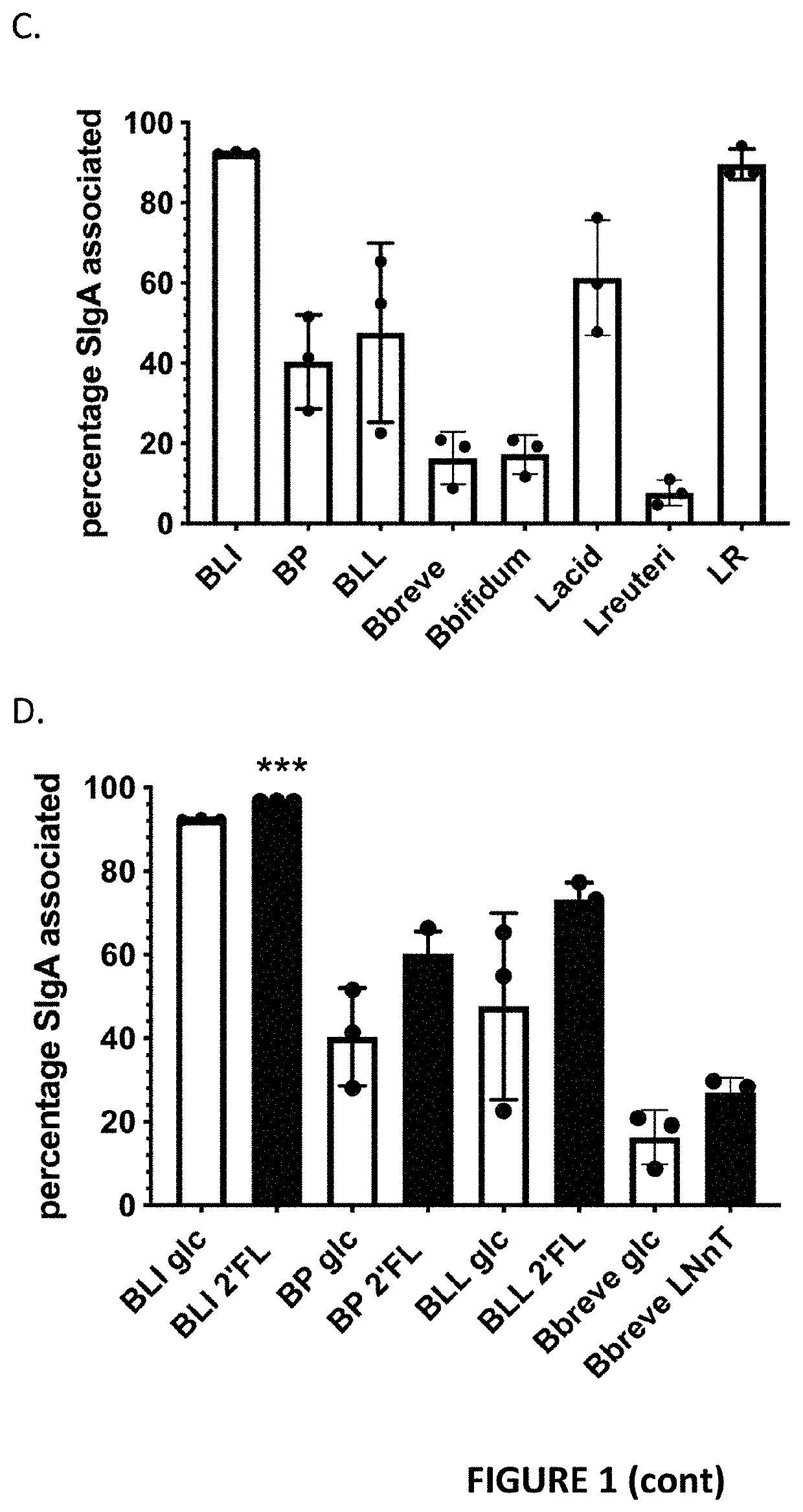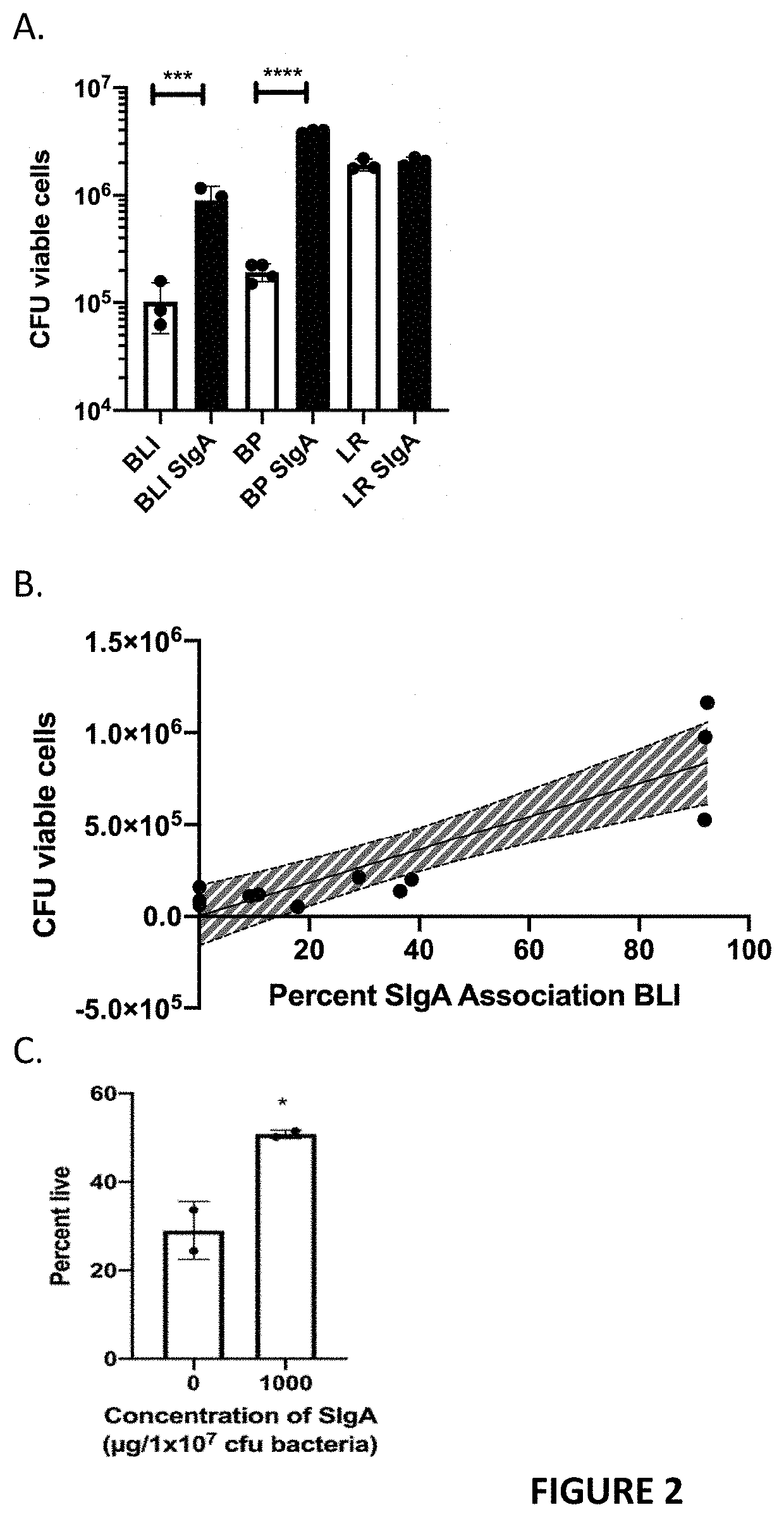Beneficial bacteria and secretory immunoglobulin a
a technology of secretory immunoglobulin and beneficial bacteria, which is applied in the direction of peptides/protein ingredients, drug compositions, peptides, etc., can solve the problem that infants or children may be at increased risk of diarrheal diseases
- Summary
- Abstract
- Description
- Claims
- Application Information
AI Technical Summary
Benefits of technology
Problems solved by technology
Method used
Image
Examples
example 1
In Vitro Selection of Effective sIgA-Bacteria Complexes
[0068]Bacterial strains (Table 1) were selected based on two criteria: their ability to bind to mucin glycans (Lactobacillus species) or specific human milk oligosaccharides (HMOs) (Bifidobacterium species), and their status as a probiotic or commensal isolate. Bacteria were cultured overnight on Mann-Rogosa-Sharpe (MRS) agar, then passaged once in MRS broth anaerobically (1% inoculum) at 37° C. and passaged a second time in basal MRS (bMRS) with 1% carbohydrate. Bacteria were first tested for their growth on 1% glucose, lactose, 2′FL and
[0069]LNnT in bMRS in a 96-well plate under anaerobic conditions at 37° C. and their OD600 measured every 30 min for 48 h to determine both their ability to grow on the carbohydrate source and their population growth curve for optimization of assays. For all further in vitro experiments, bacterial cultures were assayed during mid-log growth as determined by optical density at 600 nm, using steri...
example 2
In Vivo Selection for Improved Colonization
[0093]Finally, this SIgA association improves enteric colonization of B. infantis in BALBc mice, which is further enhanced when mice are supplemented with HMO.
[0094]Mice: 6-week old female BALBc mice were purchased from The Jackson Labs. Mice were housed in an American Association for the Accreditation of Laboratory Animal Care-accredited facility, and procedures were conducted in compliance with the University of California Institutional Animal Care and Use Committee. Mice were co-housed 5 mice per cage in the Training and Research Animal Care Services vivarium at the University of California, Davis under conventional conditions with free access to standard chow RM1P (801151, Special Diet Services, Witham, England) and sterilized tap water with or without 2′FL. Mice were acclimated for 1 week prior to treatment. Mice were euthanized by decapitation following deep anesthesia with 100 mg / kg ketamine and 10 mg / kg xylazine administered by intr...
PUM
| Property | Measurement | Unit |
|---|---|---|
| Composition | aaaaa | aaaaa |
| Fraction | aaaaa | aaaaa |
| Affinity | aaaaa | aaaaa |
Abstract
Description
Claims
Application Information
 Login to View More
Login to View More - R&D
- Intellectual Property
- Life Sciences
- Materials
- Tech Scout
- Unparalleled Data Quality
- Higher Quality Content
- 60% Fewer Hallucinations
Browse by: Latest US Patents, China's latest patents, Technical Efficacy Thesaurus, Application Domain, Technology Topic, Popular Technical Reports.
© 2025 PatSnap. All rights reserved.Legal|Privacy policy|Modern Slavery Act Transparency Statement|Sitemap|About US| Contact US: help@patsnap.com



